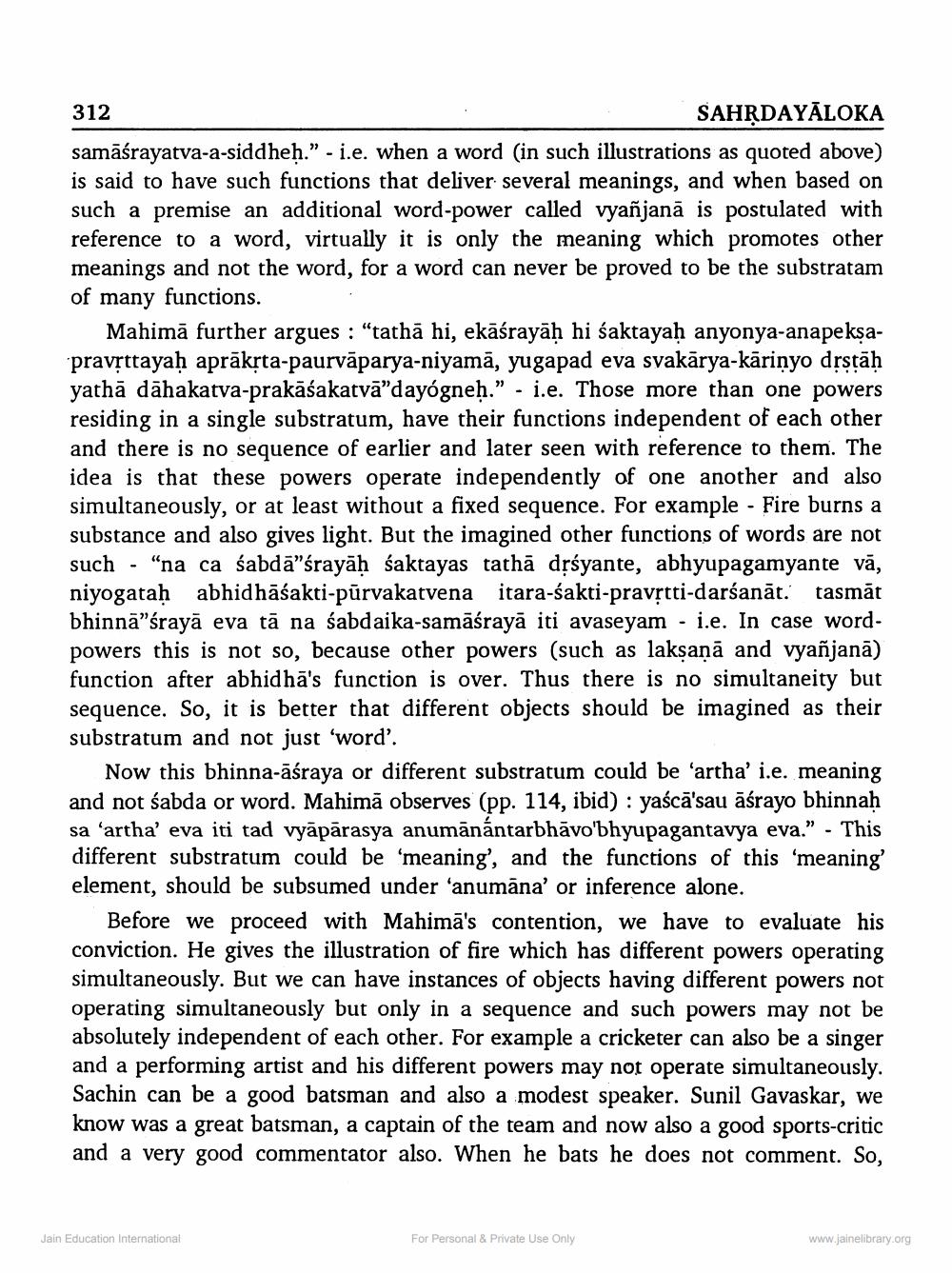________________
312
SAHRDAYĀLOKA
samāśrayatva-a-siddheh.” - i.e. when a word in such illustrations as quoted above) is said to have such functions that deliver several meanings, and when based on such a premise an additional word-power called vyañjanā is postulated with reference to a word, virtually it is only the meaning which promotes other meanings and not the word, for a word can never be proved to be the substratam of many functions.
Mahimā further argues : "tathā hi, ekāśrayāḥ hi śaktayaḥ anyonya-anapeksapravsttayah aprāksta-paurvāparya-niyamā, yugapad eva svakārya-kārinyo drstāh yathā dāhakatva-prakāśakatvā"dayógneh.” - i.e. Those more than one powers residing in a single substratum, have their functions independent of each other and there is no sequence of earlier and later seen with reference to them. The idea is that these powers operate independently of one another and also simultaneously, or at least without a fixed sequence. For example - Fire burns a substance and also gives light. But the imagined other functions of words are not such - "na ca śabdā”śrayāḥ śaktayas tathā dịśyante, abhyupagamyante vā, niyogatah abhidhāśakti-pūrvakarvena itara-śakti-pravstti-darśanāt. tasmāt bhinnā”śrayā eva tā na sabdaika-samāśrayā iti avaseyam - i.e. In case wordpowers this is not so, because other powers (such as laksanā and vyañjana) function after abhidhā's function is over. Thus there is no simultaneity but sequence. So, it is better that different objects should be imagined as their substratum and not just 'word'.
Now this bhinna-āśraya or different substratum could be 'artha' i.e. meaning and not sabda or word. Mahimā observes (pp. 114, ibid) : yaścā'sau āśrayo bhinnah sa ‘artha' eva iti tad vyāpārasya anumānántarbhāvo'bhyupagantavya eva." - This different substratum could be 'meaning', and the functions of this meaning' element, should be subsumed under 'anumāna' or inference alone.
Before we proceed with Mahimā's contention, we have to evaluate his conviction. He gives the illustration of fire which has different powers operating simultaneously. But we can have instances of objects having different powers not operating simultaneously but only in a sequence and such powers may not be absolutely independent of each other. For example a cricketer can also be a singer and a performing artist and his different powers may not operate simultaneously. Sachin can be a good batsman and also a modest speaker. Sunil Gavaskar, we know was a great batsman, a captain of the team and now also a good sports-critic and a very good commentator also. When he bats he does not comment. So,
Jain Education International
For Personal & Private Use Only
www.jainelibrary.org




